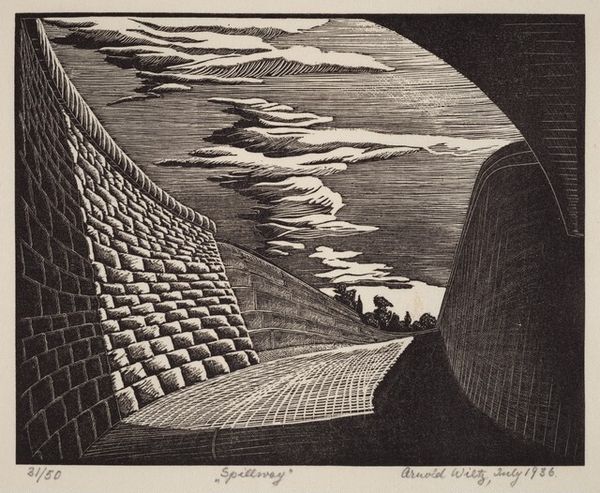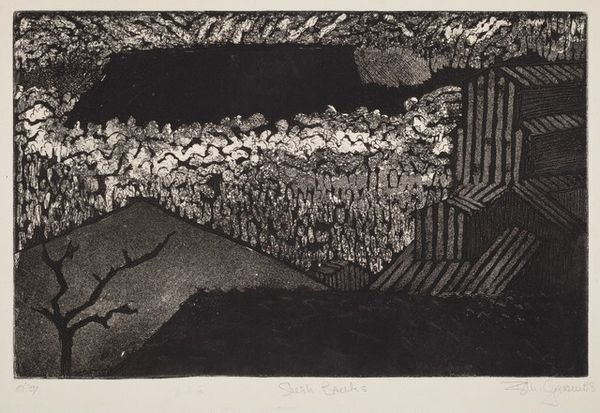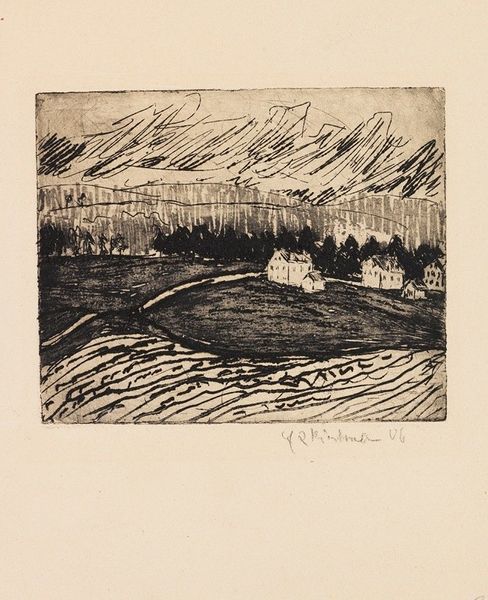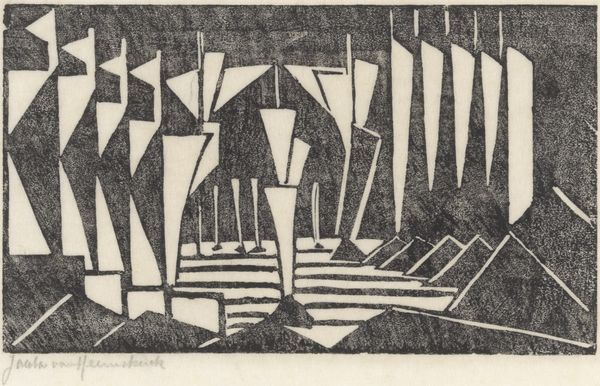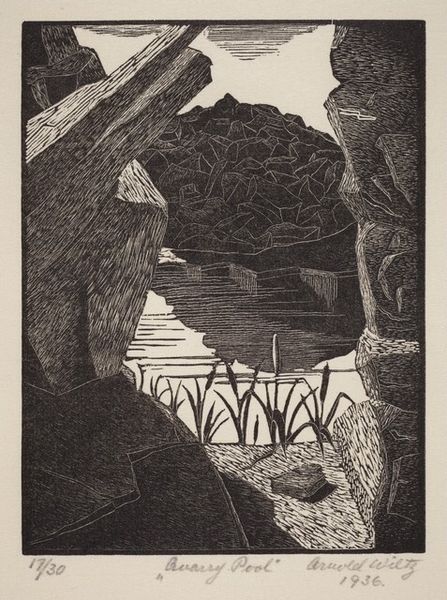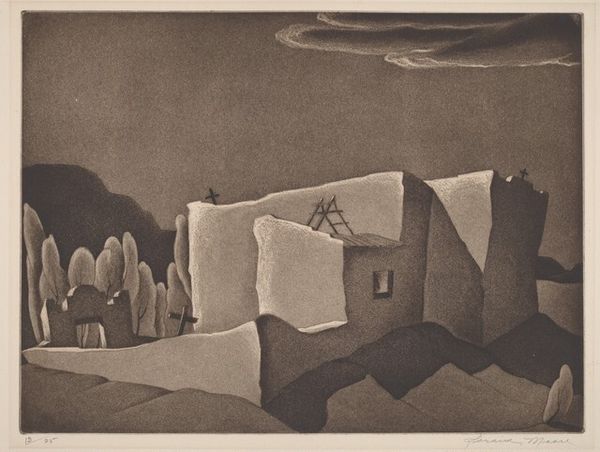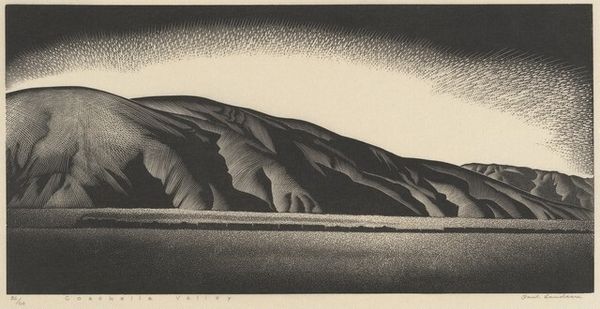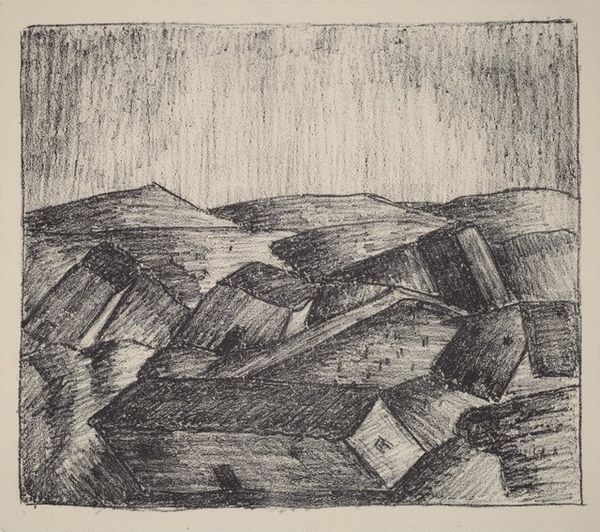
print, woodblock-print, woodcut
# print
#
landscape
#
woodblock-print
#
geometric
#
woodcut
#
realism
Dimensions: image: 151 x 222 mm sheet: 244 x 319 mm
Copyright: National Gallery of Art: CC0 1.0
Editor: So, this is "Duck Lake, Ward, Colorado" by Harold Emerson Keeler, made in 1945. It’s a woodblock print, and it strikes me as quite graphic, almost stark in its contrast. What do you see in this piece? Curator: Well, immediately, the labour involved in the woodcut process comes to mind. Imagine the artist meticulously carving away at the block to create those sharp lines and textured surfaces. Each mark represents a physical act of labour, a direct engagement with the material. Editor: Absolutely! It's very tactile in a way that a painting wouldn't be. But how does the medium itself contribute to our understanding of the landscape depicted? Curator: It directs our attention to the artist’s craft, and challenges this assumption that "high" art is separate from modes of "craft." Consider the social context too – woodcuts were often used for mass reproduction, making art accessible to a wider audience, which is different than say, an oil painting. Does the artist challenge any perception of how we understand nature in the context of 1945? Editor: I hadn’t thought about its accessibility. I suppose it does make me reconsider who would have consumed this art, and how different classes of people could connect over landscape. The labor is now much clearer to me. Curator: Exactly! By focusing on the materiality and production, we gain insights into the social and economic factors that shaped the artwork, making art more egalitarian for consumption and engagement. We appreciate its artistry alongside its function and socioeconomic relevance. Editor: I see what you mean, looking closely at the materials really opens up a different way of considering art beyond just aesthetics. Thank you!
Comments
No comments
Be the first to comment and join the conversation on the ultimate creative platform.


